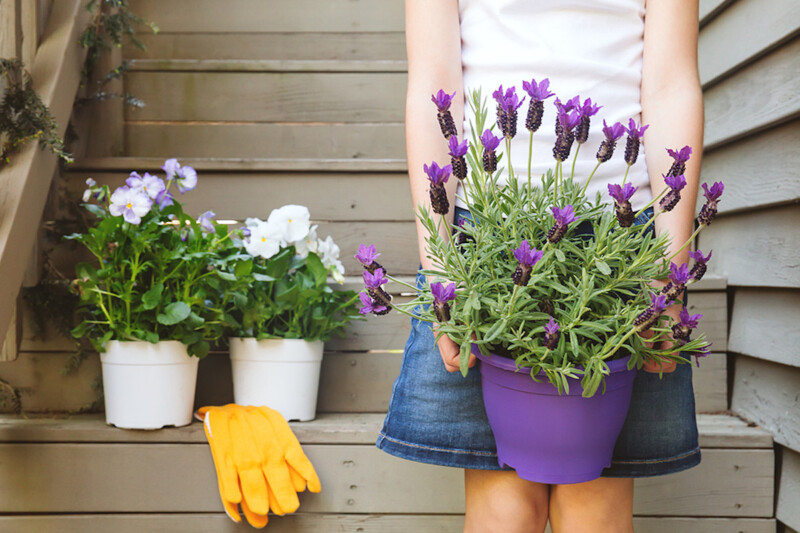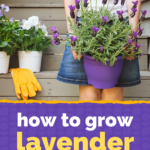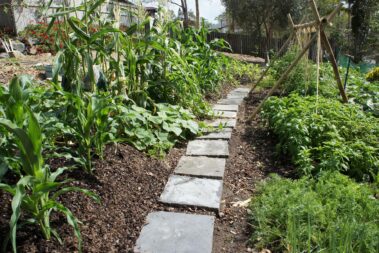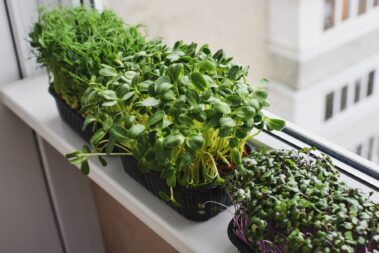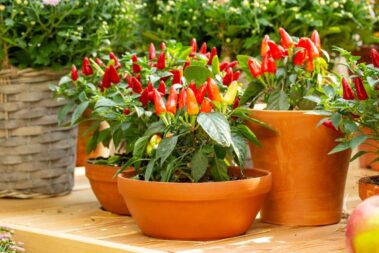If you’re anything like me, you occasionally find yourself daydreaming about walking through the fields of elegant lavender in the French Riviera. (No? Just me?)
How great would it be to have such a beautiful, fragrant scene waiting for you outside your front door?
Unfortunately, many of us lack the warm, dry weather and sandy soil it takes to grow most varieties of lavender. But luckily there is a way to bring a little of the French countryside to your home. And all you need are a few pots and these six tips.
Table of Contents
How to Grow Beautiful Lasting Lavender
There are many varieties of lavender out there, some more hardy than others.
English lavender (Lavandula angustifolia) is the toughest of the family and can withstand colder winters and grows well in most soil types.
French lavender (Lavandula stoechas), on the other hand, is only hearty to zones 8 and 9 and takes some experience to grow, even in pots. This is unfortunate, considering this is one of the most fragrant types and the variety with the most eye-catching flowers.
Whether you prefer French, English, or even Lavandin, know that you can grow any type of lavender in containers. And with the right set up, it’s even possible to replicate the beauty and scent of those purple French fields.
1. Choose the Perfect Pot
Choose a pot that is at least a foot deep, and don’t be afraid to pot up as your lavender grows. Even more important than container size is how well the pot drains. Lavender likes dry soil and will fade quickly in overly damp environments.
Choose a pot with plenty of drainage holes (or add a few more with a drill). Pots with saucers aren’t recommended since they cause water to pool near the end of the roots.
2. Fill It with the Right Stuff
Before you add anything to your pot, fill the bottom inch or two with small rocks or pea gravel to help facilitate drainage. Then fill the rest of the container with alkaline, sandy, well-draining potting soil.
If you live in an especially hot area, it may help to cover the top of the soil with an inch or two of mulch to extend the time between needed waterings.
3. Choose a Sunny Location
Lavender loves the sun and needs at least eight hours of direct light per day. A south-facing porch or sunny balcony make great locations for your new lavender pots.
Lavender that gets too much shade will typically still grow but growth will be slower, flowers will be less abundant, and even the fragrance will be noticeably diminished.
4. Water Sparingly
Let your lavender pot dry out somewhat between waterings. When you do water, do so deeply. Keeping the hose on the plant until water freely runs out the bottom is a good way to be sure your plant is getting the drenching it needs.
Flowering plants will require more water than those without buds. During the winter, water less frequently, allowing the soil to dry completely before offering only enough water to wet the top inch or so of soil.
5. Prune for Form and Flowers
Lavender can be maintained in a naturally bushy form or trimmed up to resemble a rounded tree, depending on the variety. In either case, it is important to avoid pruning the thick woody branches of the plant. Instead, focus on trimming back the leafy branches, leaving a few inches of leaves between where you cut and the woody stalks.
To encourage flower growth, only do a light pruning of dead stalks in the spring and save your heavy, shaping prune until after the flowers have gone to seed.
6. Protect It From the Cold
Lavender in pots, especially the less hardy varieties, will need to be brought inside during the winter unless you live in a temperate climate.
You can either store your pot in your garage and allow the plant to go completely dormant, or place the plant in front of a sunny window in your home. In either case, expect growth to slow significantly, if not completely. Water lavender sparingly in the winter and return the plant to its beloved sun as soon as the threat of frost has passed.
How to Enjoy Your Lavender
Most people grow lavender simply for the beauty and fragrance it adds to the garden, but this plant actually has many uses beyond its looks.
Here are some ways you can utilize your lavender cuttings:
- Add buds to baked goods and teas
- Dry your stems to make a beautiful timeless arrangement
- Add dried flowers to your bath or bath salt mix
- Fill a sachet with dried flowers and use as a room or drawer freshener
- Add fresh cuttings to bouquets and centerpieces
However you choose to enjoy your new lavender plant, this beauty is sure to become one of your favorite potted companions.
- How to Pick the Perfect Watermelon For a Sweet Summer Treat - April 10, 2024
- Future Kind’s Foundations: A Multivitamin Made for Vegans - December 5, 2023
- Does Nutritional Yeast Go Bad? - November 28, 2023

